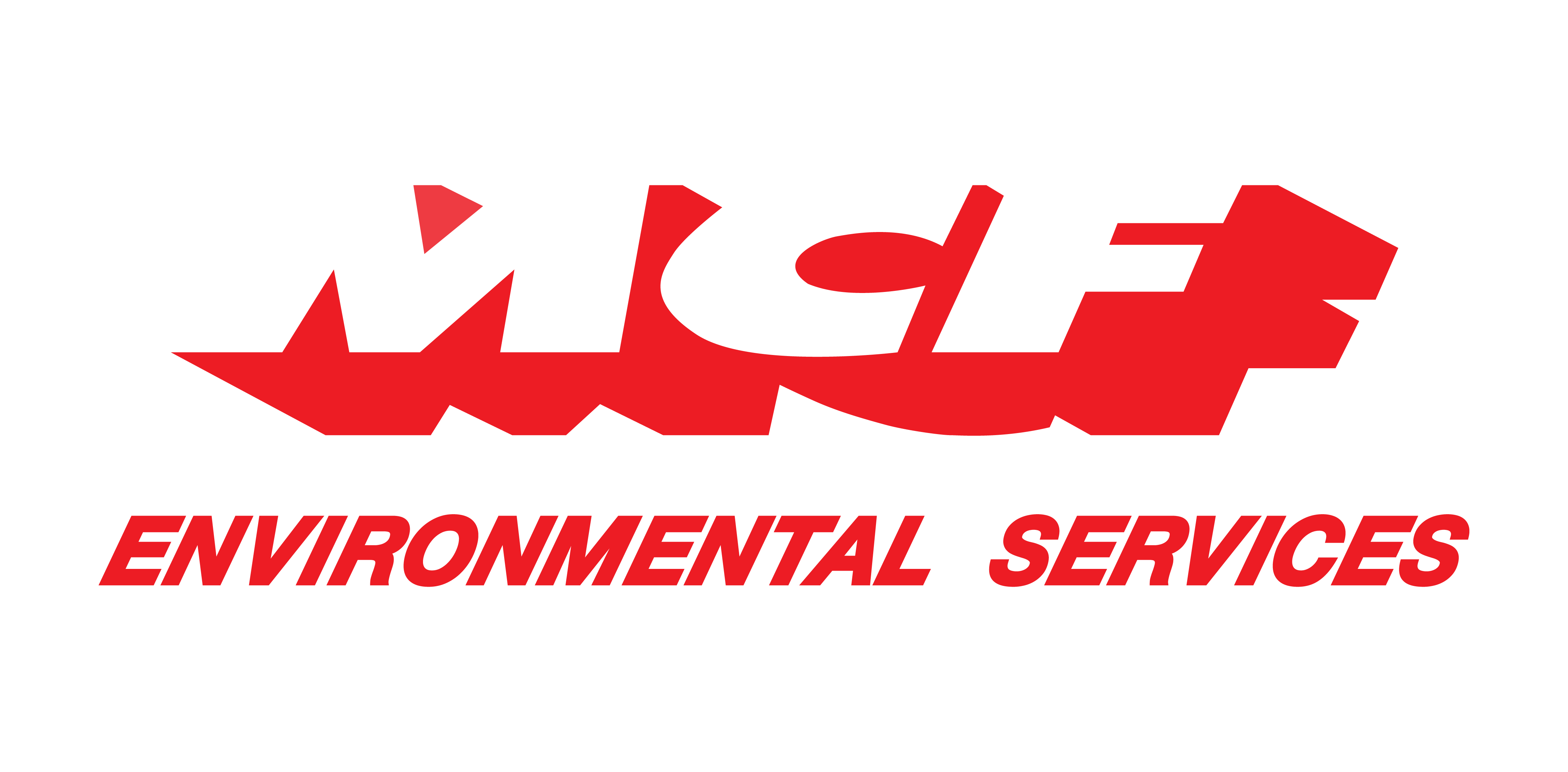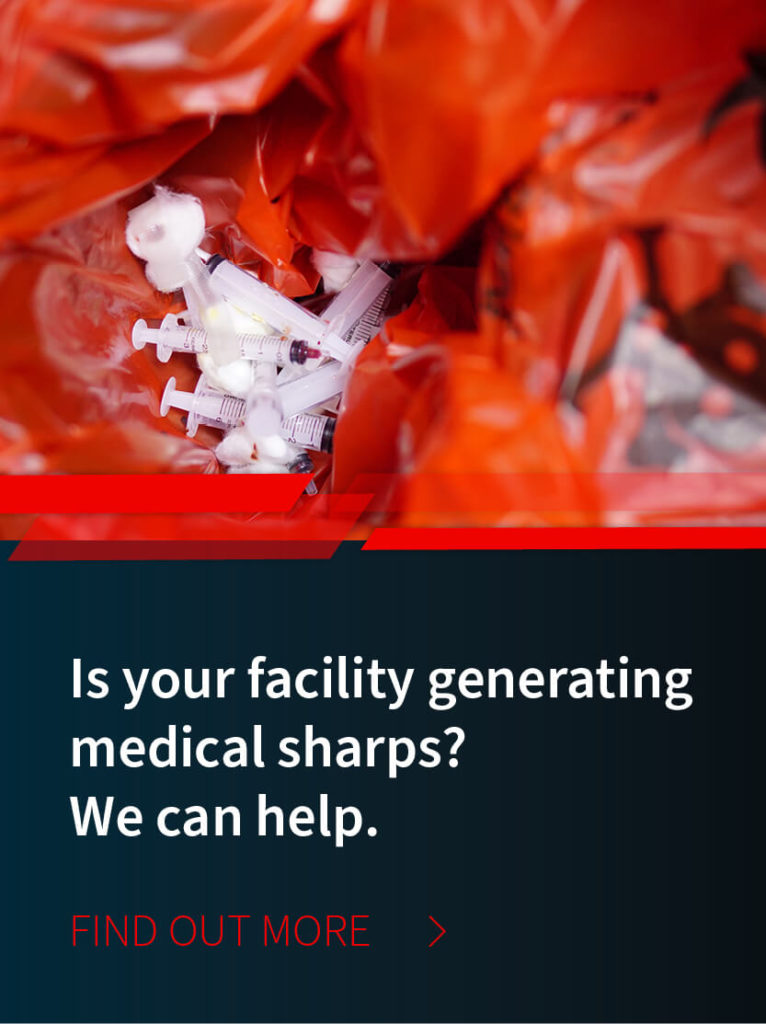
/ IN THIS BLOG
01 / What exactly is a medical "sharp?"
What Is a Hazardous Waste Contingency Plan?
The straightforward name “sharp” has evolved to become the preferred medical moniker for any device having a point or edge that can puncture or incise skin—whether by design or accident. These include needles, syringes, lancets, auto-injectors, infusion sets, and connection needles/sets—all of which require a sharps-disposal regimen.
Standard protocol specifies that all sharps must be dispatched into a purposed-designed container immediately after use. This is to reduce the primary risk of accidental cuts and punctures, as well as the secondary risk of spreading disease by way of those cuts and punctures.
According to OSHA, improper sharps disposal is a significant cause of injury in the workplace, usually due to bad or problematic practices, not enough sharps containers in a given area, overfilled containers, or using the wrong sharps container for a given device (e.g., disposable scalpels).
Obviously, if loose sharps are poking through plastic garbage bags, onsite janitors and housekeepers are at risk for puncture wounds—and consequently HIV, hepatitis, and other bloodborne diseases. Offsite, if and when an out-of-compliance sharp container ruptures inside or outside a garbage truck, sanitation personnel are at risk
02 / How pervasive are “sharps” in medicine
Patients with such common diagnoses as allergies, arthritis, blood clotting, cancer, diabetes, hepatitis, infertility, migraines, multiple sclerosis, osteoporosis, or psoriasis will likely have “sharps” as part of their therapeutic regimen, exacerbating the need for sharps container disposal.
The World Health Organization (WHO) estimates that about 16 billion hypodermic injections are administered yearly. And as roughly four percent of humanity lives in the United States, that’s about 640 million “needles” per annum requiring sharps-disposal, domestically speaking.
Given such ubiquity, it’s no surprise that how your hospital, clinic, or pharmacy manages sharps disposal is of keen interest to the EPA, FDA, and OSHA, as well as other state and regional authorities.
(N.B. Individual US state regulations regarding hazardous wastes are typically stricter than their federal counterparts. Get expert advice about your state here.)
03 / What kind of sharps-disposal schedule is best for your situation
Designing a compliant sharps-disposal schedule for your hospital, clinic, or pharmacy that’s efficient and cost-effective begins with projecting your volume and establishing a suitable collection frequency relative to that amount.
Too many contractors simply collect sharps on a weekly or monthly schedule, which accommodates their operational needs, not those of your hospital, clinic, or pharmacy.
Contrarily, determining the likely number of spent sharps you’ll generate—and establishing a service frequency to specifically serve that projection—minimizes your collection costs, diminishes service interruptions, and can even reduce your carbon footprint (when you consider the comings & goings of fuel-burning service vehicles).
04 / What kinds of sharps-containers do you need
Another element of sharps-disposal management is determining the kinds and number of sharps containers that you’ll need.From a patient-safety perspective, the FDA stipulates that sharps containers must be made of a heavy-duty plastic, be closable with a tight-fitting/puncture-resistant lid, remain upright & stable during use, and be properly labeled to warn of the hazardous waste inside the container.
From a workplace standpoint, per OSHA, sharps containers must be closable, puncture-resistant, leakproof on sides and bottom, and likewise properly labeled or color-coded in accordance with the standard [29 CFR 1910.1030(d)(4)(iii)(A)].
Bear in mind that federal requirements addressing the segregation, containment, and labeling of used sharps are generally consistent with those of most states. But there are variations that make it prudent to get expert advice according to your location.
In general, however, there are four criteria to keep in mind for your sharps containers:
Functionality. Containers should be puncture-resistant, durable, of appropriate size and shape, and have secure closure.
Accessibility. Containers should be upright, kept away from obstructed areas, and easy to use without spilling their contents.
Visibility. Containers should be clearly visible and designed so that their fill status is easily seen.
Containers should require minimal personnel training and easily accommodate one-handed disposal of sharps.
Different physical and/or operational aspects across your facility will suggest one or another kind of sharps container for onsite storage between collections. E.g. countertop containers, wall mounted containers, transportable containers, “first-aid only” containers, etc.
You can get expert advice about what kinds of sharps containers are most suitable for your circumstances here.
05 / What are the advantages of a comprehensive sharps-disposal provider?
Given the strictness of EPA and FDA regulations surrounding sharps‑container disposal, it’s advisable to seek a comprehensive sharps-disposal provider, i.e. one that won’t broker or subcontract any portion of your disposal process to another company, but instead manages the process from start to finish on your behalf.
Brokering or subcontracting across more than one company invites lapses in compliance—inadvertent or otherwise. Contrarily, a comprehensive provider manages all aspects of your sharps disposal, including container supply, transportation, disposal, compliance, and documentation, all of which greatly reduces the chances of accidental noncompliance.
As we have counseled before: The Resource Conservation and Recovery Act (RCRA) stipulates that any entity that generates a hazardous waste is legally responsible for it—from the metaphorical “cradle-to-grave.”
This includes not only its onsite hazardous waste management, but also its subsequent transportation to a properly “permitted” or licensed offsite storage, treatment, or disposal facility.
In other words, once you’ve generated a hazardous waste, there’s no way to rid yourself of complete legal responsibility for it. And in many ways, medical sharps are the epitome of a hazardous waste. Don’t take chances. Get expert advice here.
06 / Summary
The company that manages your sharps-disposal program fulfills a crucial role in maintaining the continuity of your patient services; controlling infection; and keeping your hospital, clinic, or pharmacy in legal compliance with federal and state laws.
Given that complexity, it’s to your great advantage to engage a company that can provide comprehensive (rather than piecemeal) services across sharps-container supply, transportation, disposal, compliance, and documentation.
Get more information here. And thank you for reading our blog!
Robert Losurdo
President, COO








